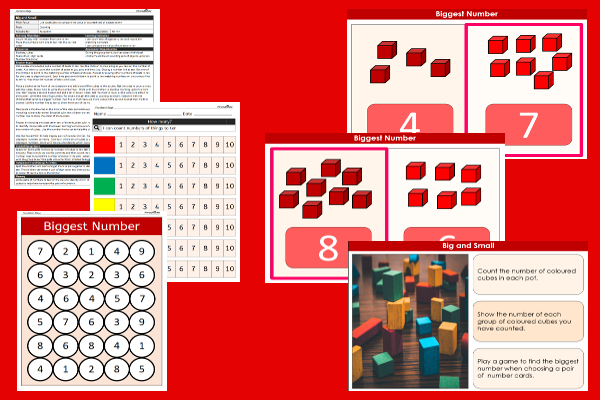Lesson Five – Big and Small

This numeracy teaching pack for the Foundation Stage gets the children to model how to select and use the correct vocabulary words to compare the value of different counted sets of objects to ten.
The class can play a paired game to compare the numerical value of pairs of numbers to ten that have been counted using concrete equipment.
Download this teaching pack including a lesson plan, classroom activities and an interactive presentation to teach the children to model how to select and use the correct vocabulary words to compare the value of different counted sets of objects to ten
Activities in this teaching pack include a template to select and record counted numbers of counted sets of objects on number lines to ten and a worksheet to play a game with a partner to match and record different digits for each of the numbers to ten.
The interactive presentation gets the children to explore how to use the correct vocabulary to compare the value of different counted sets of objects to ten.
This lesson is part of a numeracy scheme of work to get the children to count, record and compare sets of different objects to ten and identify the matching numbers using numerals. There are teaching activities for shared learning, differentiated worksheets to support independent learning and interactive presentations to introduce concepts and key skills.
-

Garden Measurements
Practise using vocabulary words and non-standard measurements to find and compare the length of different things that can found in a garden
-

Family Holiday
Identify and recount events and experiences to describe what happened when on holiday at the seaside using sentences in the past tense
-

Money Shopping
Investigate and model some of the number skills that need to be used when working with money on a shopping trip
-

Supporting Others
Explore how to build strong and positive relationships with other pupils at school and family members at home through different situations and scenarios
